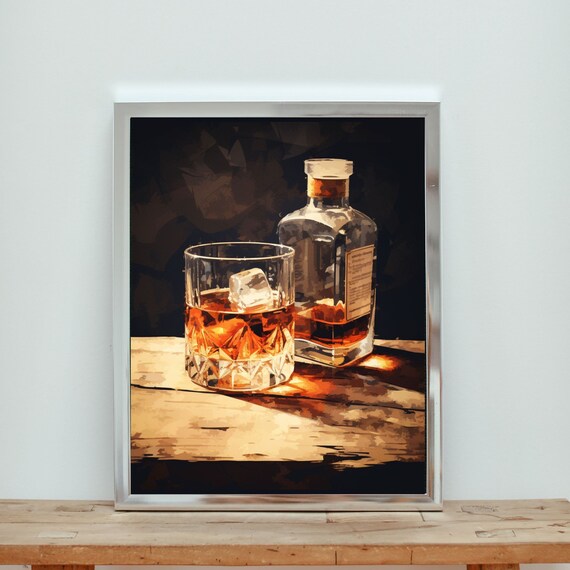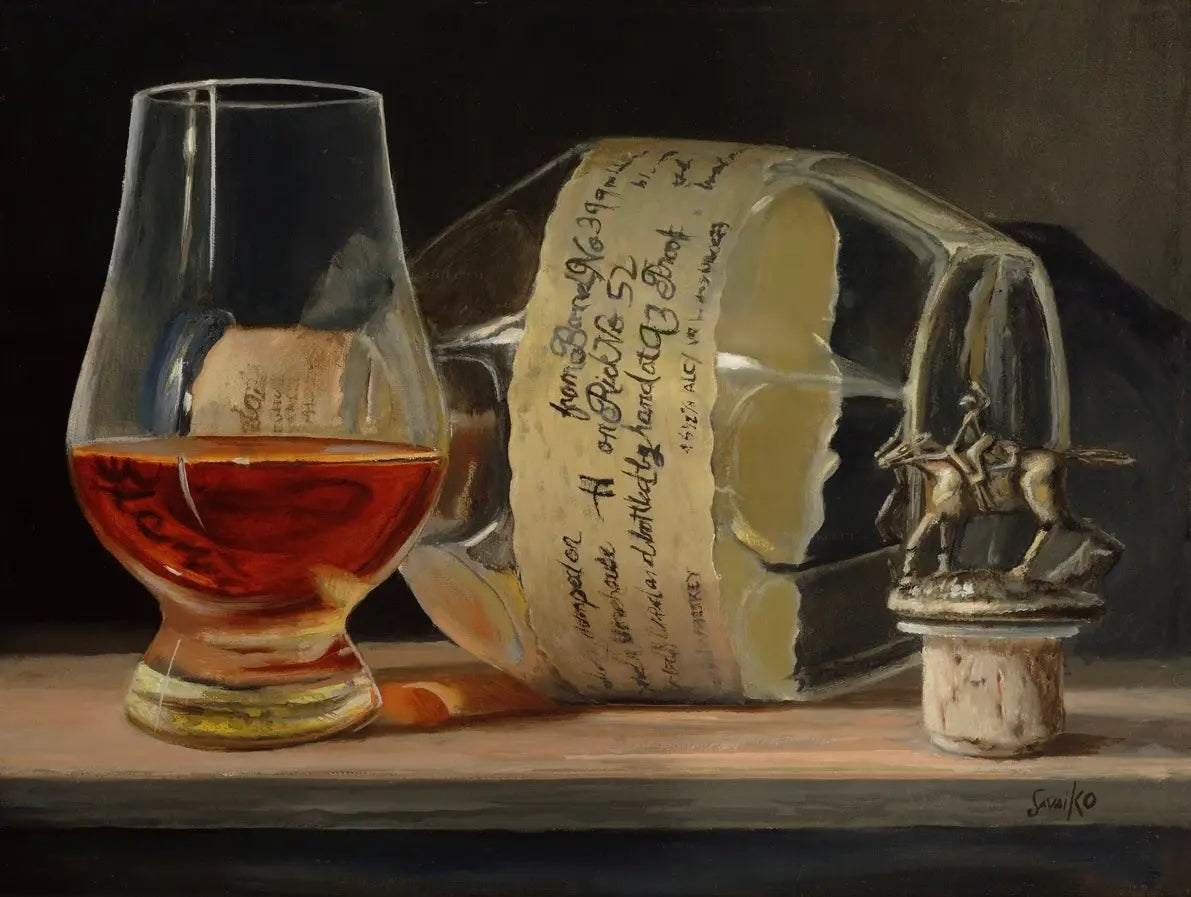Whiskey Art as a Declaration: Just How It Boosts Home Decoration
Whiskey Art as a Declaration: Just How It Boosts Home Decoration
Blog Article
The Value of Whiskey Art in Celebrating Heritage and Workmanship in the Beverage Industry
The complex connection between whiskey art and the party of heritage and workmanship within the drink market can not be overstated. Via attentively created containers and labels, whiskey brand names encapsulate their historical origins and the artisanal skills that define their manufacturing techniques.
The Historical Origins of Whiskey
At the heart of whiskey's attraction lies a rich tapestry of historic roots that map back to ancient civilizations. The beginnings of whiskey can be connected to the distillation practices of the Sumerians and Babylonians around 2000 BCE, where very early forms of fermented grain drinks began to arise. It was in the Center Ages that the art of distillation progressed significantly, specifically in Ireland and Scotland, leading to the creation of scotch as we recognize it today.
The term "scotch" itself stems from the Gaelic word "uisce beatha," implying "water of life." This expression underscores the cultural value of whiskey in Celtic societies, where it was often related to routines, celebrations, and public bonding. By the 15th century, purification became an acknowledged craft within monastic neighborhoods, leading the way for the facility of legal distilleries.
As trade paths broadened, bourbon's appeal grew, going beyond regional borders and recording the interest of lovers worldwide. Realism Art. This historical journey reflects not only the craftsmanship behind scotch manufacturing yet additionally its essential function in social and social contexts, noting it as a substantial drink throughout background
Artistic Expression in Branding
Bourbon branding stands as an engaging junction of virtuosity and business, where aesthetic identification plays a crucial role fit consumer perception. The looks of bourbon tags, product packaging, and advertising materials show not only the brand's tale yet additionally its core worths and heritage. With creative expression, distilleries communicate a narrative that resonates with consumers, evoking feelings and triggering links.
Making use of shade, typography, and imagery in branding offers to distinguish items in a saturated market. Typical motifs might stimulate a sense of authenticity and workmanship, while modern styles can indicate development and forward-thinking. This critical artistic direction improves brand name recognition and loyalty, enabling customers to forge a personal connection with the bourbon they choose.
Furthermore, creative expression in branding usually acts as an event of local heritage. Distilleries regularly include local symbols or historical recommendations right into their designs, creating a local color that invites consumers to take part in a wider cultural experience. Eventually, the virtuosity behind bourbon branding not just boosts aesthetic allure yet additionally enriches the overall narrative of the brand name, cultivating a much deeper appreciation for the craftsmanship and heritage ingrained in each bottle.
Workmanship in Container Layout
The virtuosity apparent in scotch branding extends past aesthetic identification to incorporate the workmanship associated with container style. Each bottle functions as a vessel not just for the spirit within, but additionally for the tale it informs regarding its tradition, beginning, and top quality. The design procedure needs precise attention to information, as aspects such as closure, form, and material add dramatically to the general perception of the bourbon.
Craftsmanship in container style involves choosing premium glass that can enhance the scotch's shade and clearness, while also supplying a tactile experience for the customer. The silhouette of the container must be both aesthetically attractive and functional, commonly reflecting the heritage of the brand name. Many distilleries choose unique shapes or printed logos that evoke a feeling of credibility and history.
In addition, the label style and typography play a crucial function in connecting the brand name's narrative. Limited Edition. A well-crafted container not only mesmerizes the customer's eye yet also strengthens the brand name's dedication to quality and custom. In this method, the workmanship of container design ends up being a crucial facet of the whiskey experience, merging creativity with an extensive regard for heritage
Social Value of Whiskey Art
Celebrating tradition and craftsmanship, the cultural importance of scotch art goes beyond simple aesthetics, intertwining with the historical and social narratives of the regions from which it originates. Each bottle works as a canvas, depicting the distinct stories, folklore, and traditions that have formed neighborhood whiskey-making methods. The intricate designs often reflect the heritage of the distillers, incorporating symbols and themes that reverberate with the society and values of their neighborhoods.

Furthermore, scotch art plays an essential function in you could try here public gatherings and events, offering as a tangible web link in between people and their shared experiences. By appreciating the virtuosity in whiskey packaging, customers cultivate a deeper understanding and regard for the craft, ultimately enhancing their satisfaction of the beverage itself.
Modern Trends in Whiskey Discussion
In current years, the discussion of whiskey has advanced to reflect contemporary tastes and patterns while still recognizing traditional craftsmanship - Limited Edition. Distilleries are significantly concentrating on aesthetic aspects that improve the total alcohol consumption experience, bridging the gap between heritage and modernity
Ingenious container layouts have actually arised, often incorporating sustainable materials and creative tags that inform engaging tales. Lots of brand names currently team up her explanation with neighborhood musicians, instilling their items with one-of-a-kind aesthetic expressions that reverberate with customers. In addition, limited-edition launches are often packaged in collectible containers, adding worth and allure for aficionados.

Verdict
In final thought, scotch art works as an essential conduit for expressing the heritage and workmanship integral in the drink industry. Through elaborate branding, ingenious container layouts, and culturally substantial artistic elements, whiskey brands efficiently honor their customs and get in touch with customers. This creative story not just raises the recognition of scotch however additionally enhances area identification and you can look here satisfaction among producers. Eventually, bourbon art plays a crucial duty in preserving and celebrating the rich cultural tapestry of whiskey-making.


Workmanship in bottle layout entails choosing premium glass that can enhance the bourbon's shade and clarity, while also giving a tactile experience for the consumer. In this means, the craftsmanship of bottle layout ends up being a vital facet of the scotch experience, merging virtuosity with a profound regard for heritage.
In final thought, whiskey art offers as an important avenue for revealing the heritage and craftsmanship intrinsic in the beverage sector.
Report this page